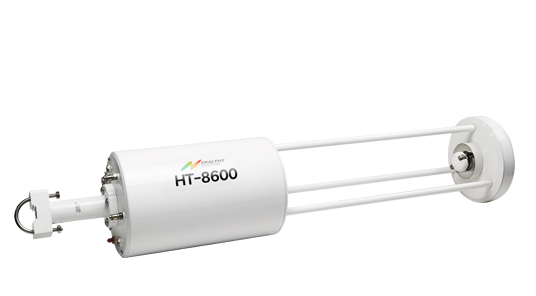 Home - Environmental monitoring - Applications - HealthyPhoton : Methane Analyzer Leading Technology Facilitates Atmospheric Methane Monitoring
Home - Environmental monitoring - Applications - HealthyPhoton : Methane Analyzer Leading Technology Facilitates Atmospheric Methane Monitoring Introduction
Against the backdrop of global climate change, the importance and urgency of reducing methane emissions from oil and gas industries are becoming increasingly prominent. Methane, as the second-largest greenhouse gas contributing to global warming, controlling its emissions comprehensively holds significant significance. Studies indicate that by 2030, global methane emissions could be reduced by 57% through existing technologies, with nearly a quarter of emissions eliminated at no net cost. International attention is therefore focused on methane reduction.

The Importance of Oil and Gas Methane Monitoring Technology
Oil and gas methane, a crucial greenhouse gas, has been increasing in emissions annually, significantly impacting global climate change. In China, oil and gas methane is a vital component of the energy system, and its development and utilization hold strategic importance for national energy security. However, methane leaks during oil and gas extraction, transportation, and utilization lead to resource waste and potential safety hazards such as fires and explosions. Therefore, researching methane monitoring technology is crucial for reducing greenhouse gas emissions, improving energy efficiency, and ensuring safe production.
During the COP28 conference, Jie Zhenhua stated that the recently released "Action Plan" clearly outlines China's control targets for key methane emissions areas. This marks China's first comprehensive and specialized policy document on methane emission control, providing top-level design and systematic deployment for future methane emission control efforts. The document not only guides further methane emission control but also has a significant impact on high-quality economic and social development. The "Action Plan" proposes eight key tasks, including strengthening methane monitoring, accounting reports, and verification system construction, as well as advancing emission control in energy, agriculture, and waste treatment sectors. China aims to achieve greater success in methane emission control while ensuring energy and food security.

HealthyPhoton Measurement Supports Atmospheric Environmental Monitoring
Amid the current focus on environmental protection and gas monitoring, the emission and concentration of methane in the atmosphere have become a focal point. Methane, as an important gas in agriculture, industry, and transportation, is closely related to environmental quality and air pollution. To accurately monitor methane concentrations in the atmosphere and better monitor the components and concentrations of greenhouse gases, HealthyPhoton Technology Co., Ltd. has introduced the HT8600 Open-Path CH4 Analyzer and the HT8840 All-in-one Portable GHG Analyzer.
HT8600 Open-Path CH4 Analyzer

Adopting Quantum Cascade Laser Absorption Spectroscopy (QCLAS), the analyzer uses high-reflectivity mirrors exposed to the atmosphere on both sides to reflect mid-infrared lasers multiple times, effectively achieving a path length of several tens of meters. It measures the weak absorption of target gases at characteristic absorption peaks in the mid-infrared laser energy. The real-time integration of the absorption peak spectrum curve enables trace gas concentration inversion. The high-frequency concentration analysis characteristics of the HT8600 make it well-suited for micrometeorological eddy covariance measurement technology, combined with a flux observation system for accurately quantifying the net exchange flux of methane between different ecosystems and the atmosphere.

HT8840 All-in-one Portable GHG Analyzer.
The HT8840 analyzer, designed based on Quantum Cascade Laser technology, utilizes the "fingerprint" absorption spectrum of gas molecules in the mid-far infrared. It uses semiconductor Quantum Cascade Lasers (QCL) as a light source, allowing the laser to pass through a mid-infrared enhanced optical cavity. The transmitted light is received by a mid-infrared photoelectric detector, and the transmitted spectrum is extracted and analyzed, accurately deducing the concentration of target greenhouse gas components. The portable greenhouse gas analyzer achieves fast response measurements within the instrument case, utilizing independent strong absorption lines to avoid cross-interference from other gas molecules. This series of portable greenhouse gas analyzers can be powered by solar energy or lithium batteries, enabling fixed-point or mobile continuous observation of greenhouse gas concentrations.
Conclusion
Reducing methane emissions from oil and gas is crucial for global climate change control. Advanced laser spectroscopy technology enables precise monitoring of methane concentrations in the atmosphere. This will help governments, businesses, and society better understand methane emission situations, formulate scientifically reasonable emission reduction measures, and promote green and low-carbon development in China. In the future, HealthyPhoton will continue to intensify research and development efforts and promote the application of oil and gas methane monitoring technology, contributing to global climate governance and green and low-carbon development.
 Tel:+86-400 961 6990 Email:info@healthyphoton.com
Add:Room 305, Building 1, Zhongchuang Science Park, Jinyuan Road, Panhuo Street, Yinzhou District, Ningbo City,China
Tel:+86-400 961 6990 Email:info@healthyphoton.com
Add:Room 305, Building 1, Zhongchuang Science Park, Jinyuan Road, Panhuo Street, Yinzhou District, Ningbo City,China


